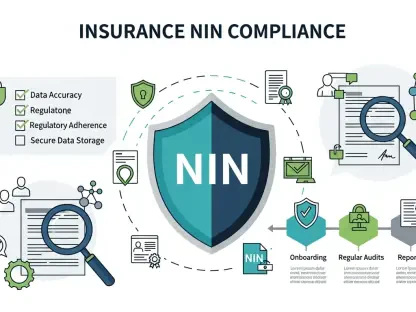Imagine a business pouring significant resources into a robust cyber insurance policy, believing it to be a foolproof shield against the financial devastation of a data breach, only to discover after an attack that the claim is denied due to overlooked security basics. This scenario is far from hypothetical; it plays out repeatedly as organizations grapple with the harsh reality that cyber insurance is not a substitute for strong security practices. Many companies fall into the trap of viewing insurance as a comprehensive safety net, assuming it will cover losses regardless of their internal safeguards. However, insurers are increasingly tying coverage to strict adherence to fundamental cybersecurity measures. This article delves into the misconceptions surrounding cyber insurance, the nature of common threats, evolving insurer expectations, and actionable strategies for building true resilience. The core message is clear: without a foundation of solid security hygiene, even the most expensive policy offers little protection against preventable breaches.
Misconceptions About Cyber Insurance as a Safety Net
The belief that cyber insurance can fully protect an organization from the fallout of a breach often leads to dangerous complacency in cybersecurity efforts. Many businesses invest heavily in policies, expecting them to absorb the financial impact of any incident, whether it’s ransomware, data theft, or system downtime. Yet, when a breach occurs, these same organizations frequently face partial payouts or outright claim denials because they failed to implement basic controls like multi-factor authentication or regular software updates. Insurers are not in the business of rewarding negligence; policies are structured with the expectation that companies maintain a minimum standard of security. This gap between perception and reality creates a vicious cycle where firms, feeling safeguarded by insurance, divert focus from routine protections to more glamorous, high-profile threats, only to suffer avoidable attacks. The hard truth is that insurance is not a catch-all solution but a conditional tool that demands operational discipline to be effective.
Another critical misunderstanding is the assumption that cyber insurance operates independently of an organization’s security posture. Far too often, companies treat insurance as a standalone fix rather than a complement to robust cybersecurity practices. When claims are filed after a breach, insurers scrutinize whether the organization adhered to the security commitments outlined in the policy. Failure to meet these standards—whether through unpatched systems, weak passwords, or inadequate employee training—can result in reduced coverage or outright rejection of claims. This reality shatters the illusion of insurance as a magic bullet, highlighting that it functions more as a mirror reflecting the maturity of a company’s defenses. Businesses that neglect foundational safeguards in favor of relying solely on financial protection find themselves doubly exposed: vulnerable to attacks and unsupported by the very policies they trusted to save them. True security requires a proactive mindset, not a reactive dependence on external safety nets.
The Reality of Common Cyber Threats
Contrary to popular depictions of cybercrime as elaborate, state-sponsored hacks, the majority of breaches stem from surprisingly mundane and preventable causes. Recent data from industry reports reveals that a significant portion of incidents—around 22%—result from credential abuse, while 20% arise from exploited vulnerabilities and 16% from phishing attempts. These opportunistic attacks exploit simple lapses such as reused passwords, outdated software, or employees clicking on malicious links. Unlike the cinematic espionage plots often sensationalized, only a tiny fraction of breaches involve complex motives like data destruction or spying. Insurers expect organizations to have these everyday risks under control, and when they don’t, coverage is often jeopardized. This underscores a critical disconnect: while companies may fear sophisticated threats, it’s the basic, routine failures that most frequently lead to costly incidents and unsupported claims.
Delving deeper into these common threats, it becomes evident that their simplicity does not equate to insignificance in terms of impact. Credential harvesting, for instance, often begins with something as straightforward as a phishing email tricking an employee into revealing login details, which then grants attackers access to sensitive systems. Similarly, unpatched vulnerabilities provide easy entry points for malware or ransomware, exploiting flaws that could have been addressed with timely updates. These issues are not cutting-edge challenges but rather persistent gaps in basic cyber hygiene that organizations too often overlook. When insurers review a breach, they assess whether reasonable steps were taken to mitigate such risks. Failure to demonstrate these efforts can lead to disputes over coverage, leaving businesses to bear the full brunt of financial and reputational damage. Addressing these mundane threats is not just a matter of prevention but a prerequisite for leveraging insurance as intended.
Evolving Expectations from Insurers
In recent years, cyber insurers have adopted a far more stringent approach to underwriting and claims processing, reflecting a broader recognition that coverage cannot compensate for systemic negligence. Policies now frequently mandate evidence of consistent security practices not only at the time of purchase but also during renewals and post-incident evaluations. This means organizations must continuously demonstrate adherence to fundamentals like patch management, employee training, and access controls. If a breach occurs and these measures are found lacking, insurers may reduce payouts or deny claims entirely, citing non-compliance with policy terms. This shift signals a clear message: insurance is not a shield against poor practices but a reflection of an organization’s commitment to cybersecurity. Companies that fail to align with these expectations risk finding their safety net unraveling at the moment of greatest need.
Beyond initial policy terms, insurers are increasingly conducting rigorous audits to ensure that disclosed security practices match reality. This ongoing scrutiny places pressure on organizations to maintain high standards over time, rather than treating cybersecurity as a one-time checkbox during underwriting. For instance, if a company claims to have robust phishing defenses but suffers a breach due to inadequate email filtering or employee awareness, insurers may question the accuracy of those disclosures and adjust coverage accordingly. This evolving landscape transforms insurance into a dynamic accountability mechanism, rewarding maturity and penalizing complacency. Businesses must recognize that meeting insurer expectations is not merely a contractual obligation but a critical component of risk management. As the industry continues to tighten its standards, aligning internal practices with policy requirements becomes essential for ensuring that coverage remains a viable resource in the event of an incident.
Building Resilience Through Practical Strategies
To avoid the pitfalls of overreliance on cyber insurance, organizations must prioritize actionable strategies that address the root causes of common breaches. One effective approach is continuous credential monitoring, given that a significant percentage of compromises stem from stolen or weak passwords. Beyond simply enforcing strong password policies, companies should invest in tools that detect and alert on credential harvesting attempts in real time. Additionally, phishing defenses need to extend past basic email filters to include proactive measures like identifying and blocking impersonation domains that mimic legitimate entities. For vulnerability management, a focus on prioritizing patches based on real-world exploitability—rather than tackling every flaw indiscriminately—can maximize impact with limited resources. These steps emphasize discipline over flashy technology, reinforcing that resilience begins with mastering the basics rather than chasing complex solutions.
Another vital strategy lies in fostering a culture of cybersecurity awareness across all levels of an organization. Employee errors often serve as the entry point for attacks, whether through clicking malicious links or mishandling sensitive data. Regular training programs that simulate real-world phishing attempts and teach secure practices can significantly reduce these risks. Complementing this, businesses should establish clear incident response plans to ensure swift action when breaches occur, minimizing damage and demonstrating to insurers a commitment to mitigation. Unlike technology deployments that may become outdated, a focus on human factors and procedural readiness offers enduring protection against evolving threats. By embedding these practices into daily operations, companies not only bolster their defenses but also position themselves to meet insurer expectations, ensuring that coverage serves as a supplement to, rather than a substitute for, a robust security foundation.
Reflecting on the Path to True Cyber Defense
Looking back, the journey through the limitations of cyber insurance reveals a stark truth: financial protection falters when basic security is ignored. Organizations that once leaned heavily on policies to shield them from breaches found themselves exposed when claims were denied due to preventable lapses. The data on common threats underscores how mundane issues like phishing and credential abuse drive most incidents, while insurer scrutiny tightens around consistent cyber hygiene. Moving forward, the focus must shift to embedding practical strategies—such as credential monitoring and employee training—into the fabric of daily operations. Businesses should treat insurance as a partner in risk management, not a cure-all, and regularly assess their practices against policy requirements. By committing to these actionable steps, companies can build a resilient defense that stands firm against everyday threats and ensures that coverage remains a reliable resource when needed most.









